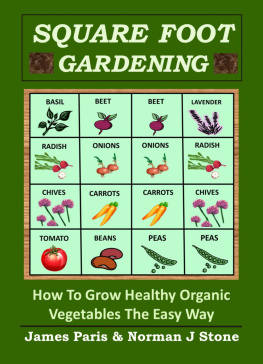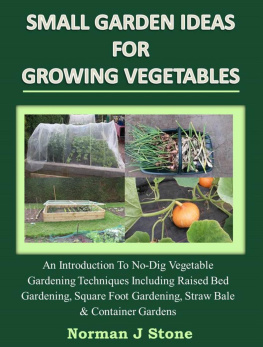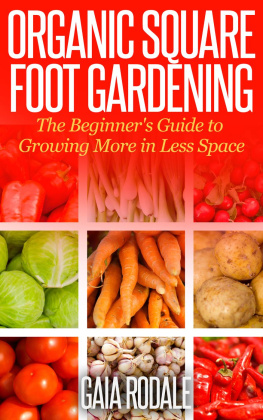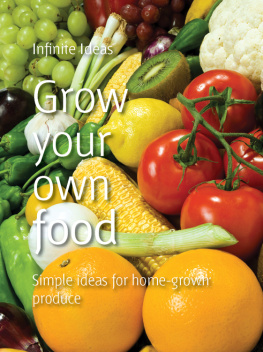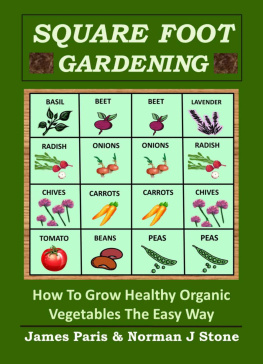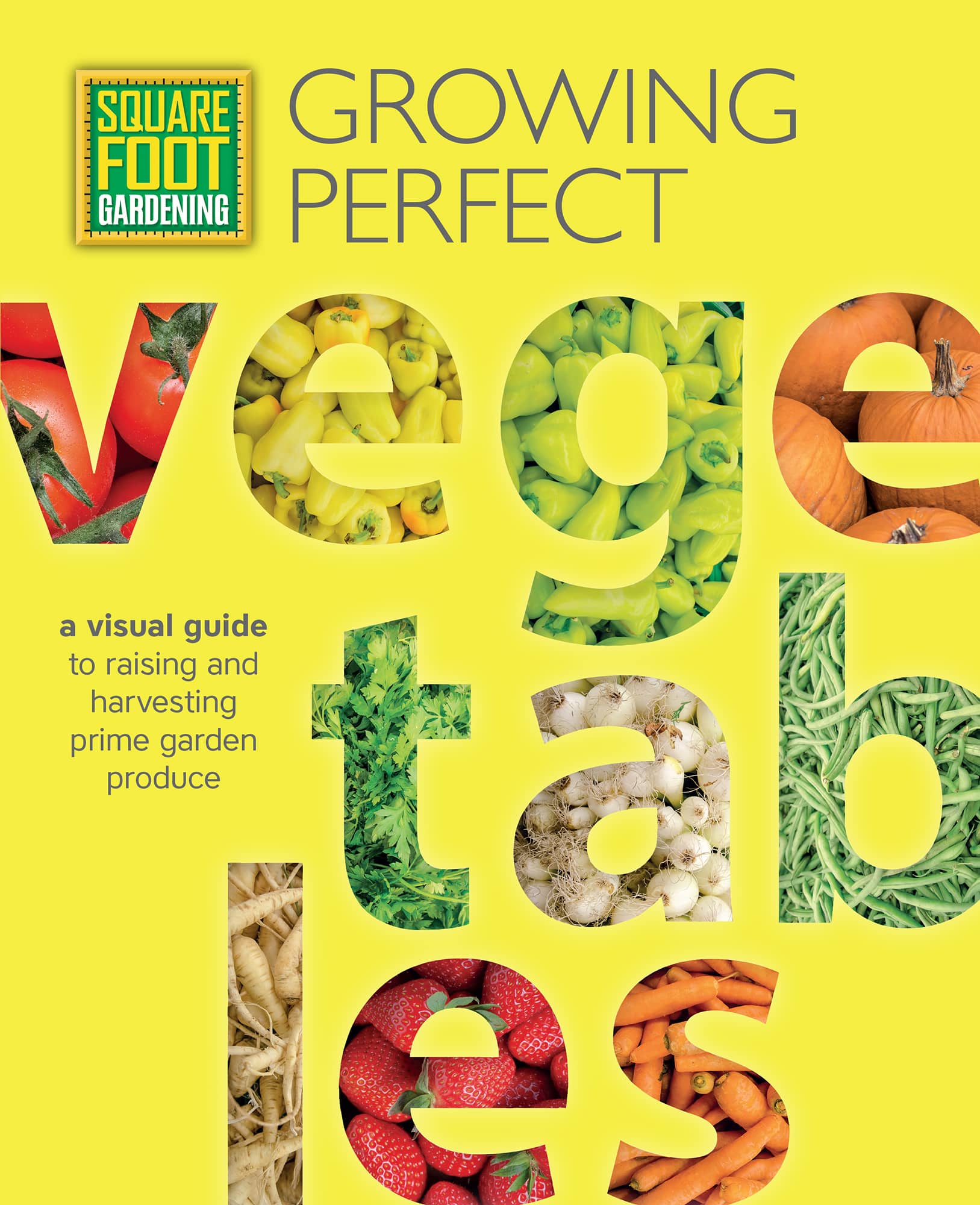Square Foot Gardening limits harvests to what you can realistically use and makes it easier to determine ripeness.
WHEN MEL BARTHOLOMEW FIRST THOUGHT UP THE SQUARE FOOT Gardening system in 1975, he was frustrated. He had seen a lot of ripe produce go to waste in his local community garden simply because of inefficiency and gardener burnout. Mel was a math-minded engineer to the core, and he believed gardening could be made more efficient, with success that could be put into numbers. He wanted his garden to produce more ripe edibles per square foot than any other. He thought it should require measurably less effort and inputs than any other garden. The numbers had to make sense. He was a man on a mission.
Of course, as a gardener, he also wanted a nice-looking, self-contained bed that didnt need any of that awful back-breaking weeding. He considered himself an environmentalist, and wanted his gardening method to use 90 percent less water than conventional row gardens did, and it had to do fine without pesticides or fertilizers. Like all gardeners, Mel preferred the fun and flavor of gardening to the repetitive hard work. He wanted his garden method to capture the enjoyment, not the drudgery, of gardening.
Square Foot Gardening founder Mel Bartholomew.
Square Foot Gardening turned out to be all that and more.
But even if you grow the perfect Square Foot Garden for you and your family and take advantage of all that mathematical thinking behind the method, youre still missing out if youre not picking your produce at exactly the right time. (Or, as Mel liked to say, The ripe moment!)
The fact was, Mel could teach people how to build a Square Foot Garden raised bed, he could show them how to make the Mels Mix soil theyd need, and he could even demonstrate the proper way to plant inside a square. But he simply couldnt hang around to show gardeners exactly when their produce was ready to be harvested. That information has been a missing link in the chain that leads from a Square Foot Garden to kitchen and table. Until now, that is.
This book takes the guesswork out of pickingand selecting already-pickedperfectly ripe produce. The information applies whether youre growing a Square Foot Garden, another type of raised-bed garden, a container garden, a row garden, or just buying most of your produce from a market.
Lets face it, weve all dealt with the disappointment of produce that turns out to be too unripe or too overripe to eat or cook. Almost everyone at one time or another has gotten an avocado home only to find out it was so far gone that it had turned to brown mush inside. Ripening can be a bit of a mystery.
COOKED OR NOT?
Although raw-food diet proponents promote eating vegetables in their natural state, theres a good reason why you should consume both raw and cooked vegetables. Eaten raw, vegetables such as carrots provide excellent vitamins and nutrients, and the fiber goes through your digestive system without breaking down. But cooking carrots, broccoli, and most other vegetables destroys cell walls, often making crucial nutrients and compounds available to the body when they otherwise wouldnt be. This is true of the essential beta-carotene in carrots and some of the cancer-fighting compounds in broccoli and other cruciferous vegetables. Cooking also can enhance sweetness and flavor in ripe vegetables.
Thats why the first chapter in this book offers a brief, basic, and understandable explanation of what ripening is (and isnt). That explanation will give you a strong grasp of what exactly is going on inside fruits and vegetableswhat it is that determines when they should come off the vine or out of the ground.
But the centerpiece to this book is : The Ripeness Listings. Weve broken this list into fruits and vegetables commonly grown in an SFG, those that arent grown in the box because they grow on plants too large for a square foot or because they ripen on a tree, and a third section for fruits and vegetables youll most likely only find in the produce aisle at your local grocery store. Each individual listing, however, provides all the insight youll need to determine if a fruit or vegetable is ripe, no matter where you might find it. The listings also cover how to actually harvest the fruit or vegetable if thats appropriate, and tips on making the most of the ripe produce you bring into the kitchen.
Of course, once you get to the point of harvest, there are a lot of varied ways to take advantage of ripe produce and even extend the life of already ripe produce. Thats why the book wraps up with a short chapter on manipulating ripeness, including ways to make your fruits and vegetables last as long as possible, or methods for using them when ripe and then storing the finished product.
Regular interaction with your plants and basic garden maintenance is your chance to monitor how your crops are ripening, and how to determine when to harvest at just the right moment.
RIPENING THE SFG WAY
Square Foot Gardening is a great way to detect ripeness in your fruits and vegetables, because the garden is contained in such controlled, small spaces that it doesnt take a lot of hunting to see the state of your edibles.
Based on growing one type of plant per square in a 4 4-foot box divided into 16 squares, Square Foot Gardening swept not only America, but the world when it was introduced. It started simply enough, with Mel trying to make a community garden more successful and easier to maintain. The idea grew in popularity until Mel had more people interested in this new way of gardening than he could reasonably teach. That led to him write Square Foot Gardening: A New Way to Garden in Less Space With Less Work in 1981. A PBS series followed, which in turn was followed by more books, including the most recent,


